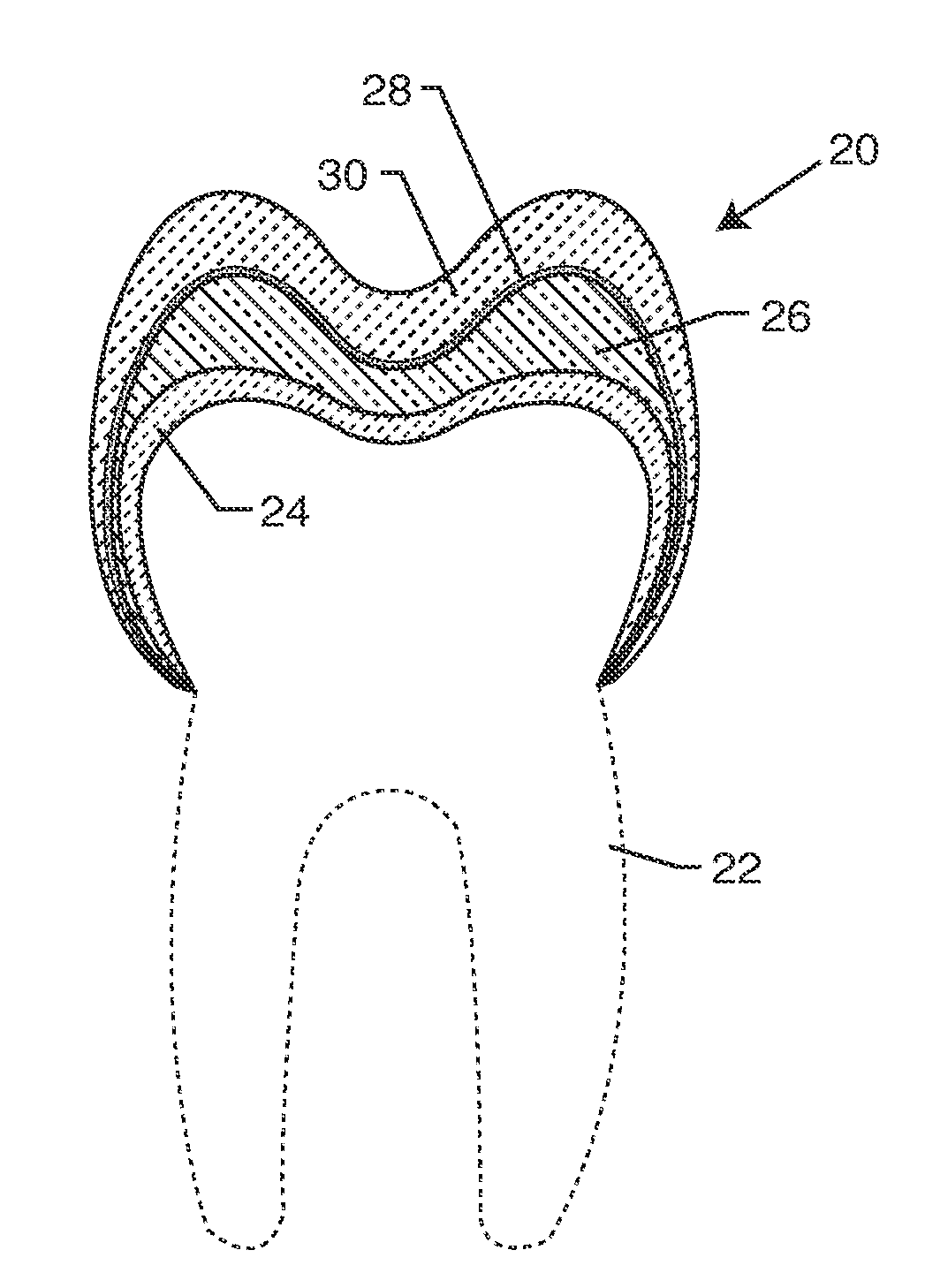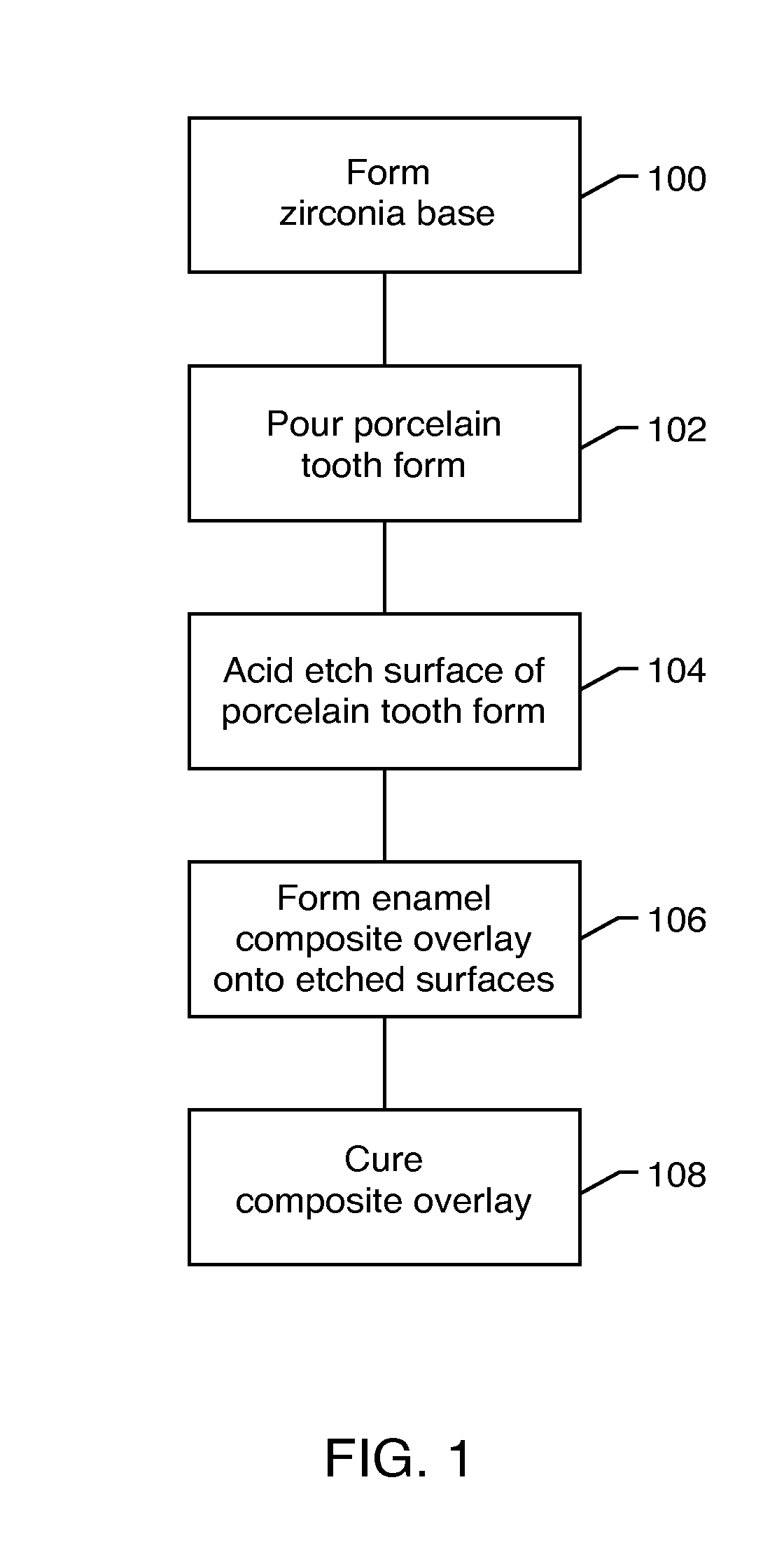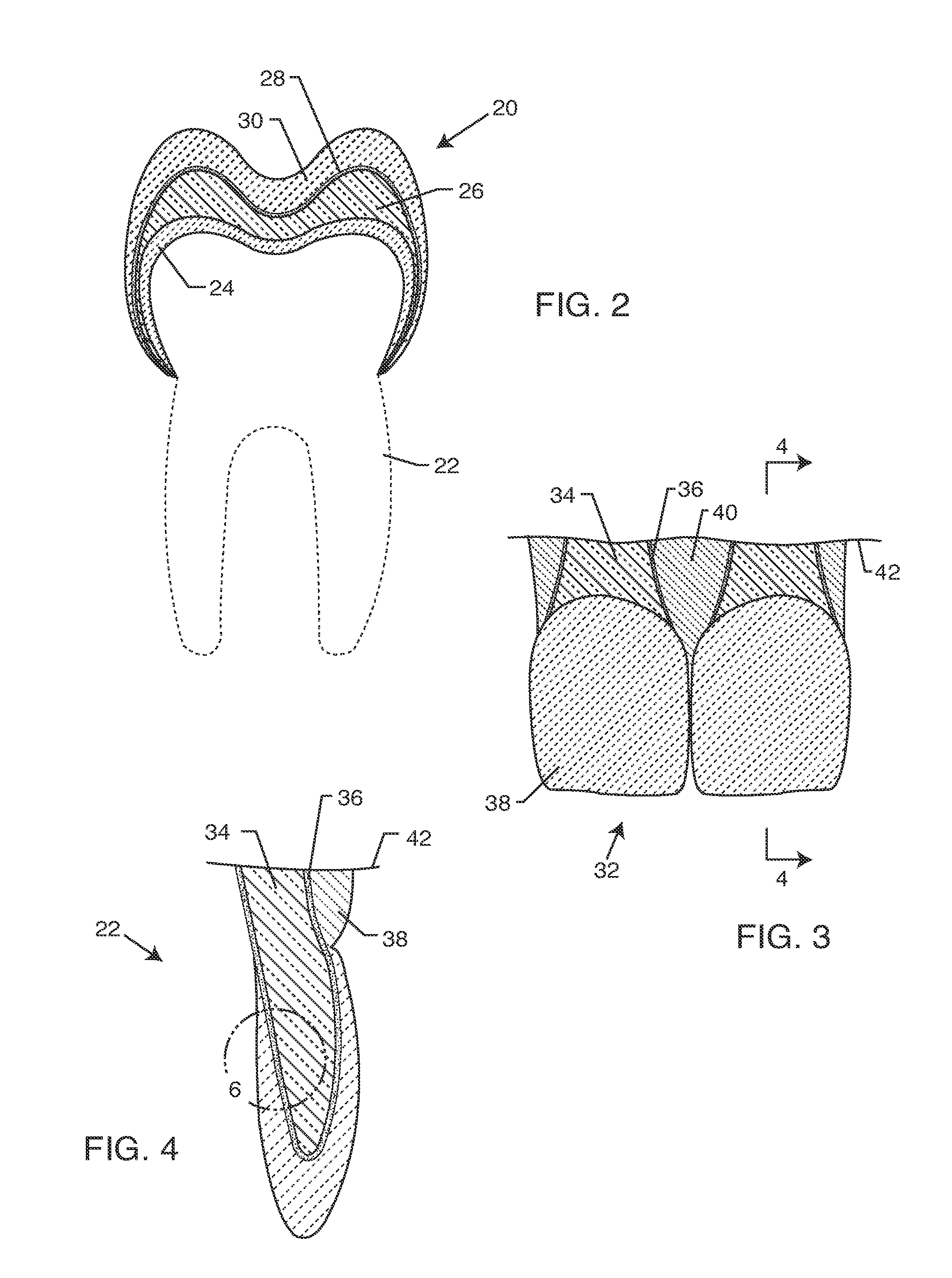Process for fabricating tooth restoration
- Summary
- Abstract
- Description
- Claims
- Application Information
AI Technical Summary
Benefits of technology
Problems solved by technology
Method used
Image
Examples
Embodiment Construction
[0030]As shown in the accompanying drawings for purposes of illustration, the present invention resides in a process for fabricating a tooth restoration, such as a crown, bridge, etc., comprised of both ceramic and composite materials. The use of ceramic and composite materials, as discussed more fully herein, provides a tooth restoration which has the characteristics or benefits of both materials in a complimentary manner.
[0031]With reference to FIG. 1, in one embodiment of the invention a base is first formed (100). Typically, the base comprises a metallic material, such as zirconia. The materials available for forming a substrate or base and the method of doing so are well-known in the art.
[0032]Porcelain, or other ceramic material, is then poured, or otherwise formed, over the base so as to be built to what would correspond to the dentin level (102). Typically, the liquid porcelain material is poured or otherwise adhered over the substrate base and then fired, as is known in the...
PUM
 Login to view more
Login to view more Abstract
Description
Claims
Application Information
 Login to view more
Login to view more - R&D Engineer
- R&D Manager
- IP Professional
- Industry Leading Data Capabilities
- Powerful AI technology
- Patent DNA Extraction
Browse by: Latest US Patents, China's latest patents, Technical Efficacy Thesaurus, Application Domain, Technology Topic.
© 2024 PatSnap. All rights reserved.Legal|Privacy policy|Modern Slavery Act Transparency Statement|Sitemap



